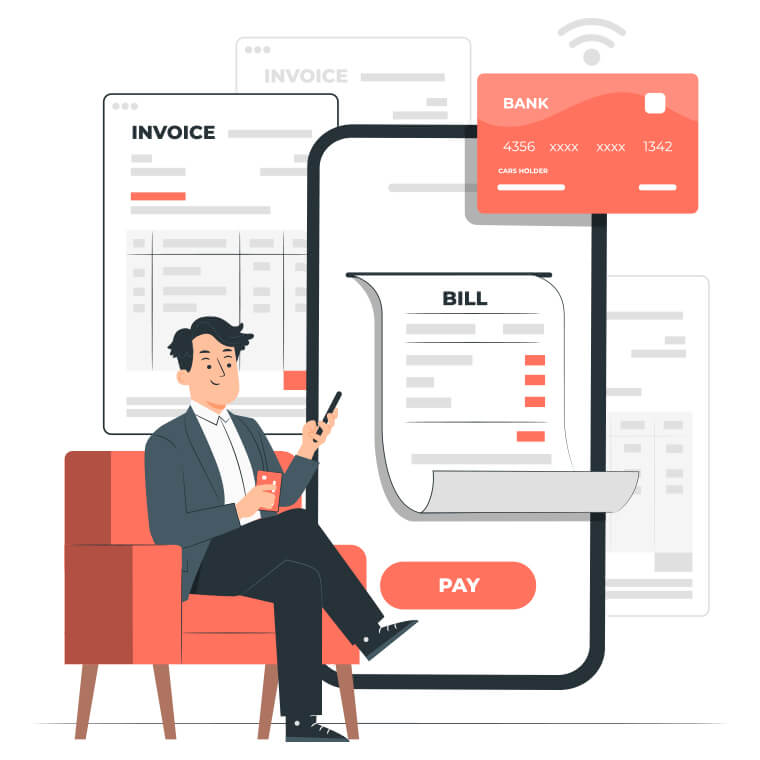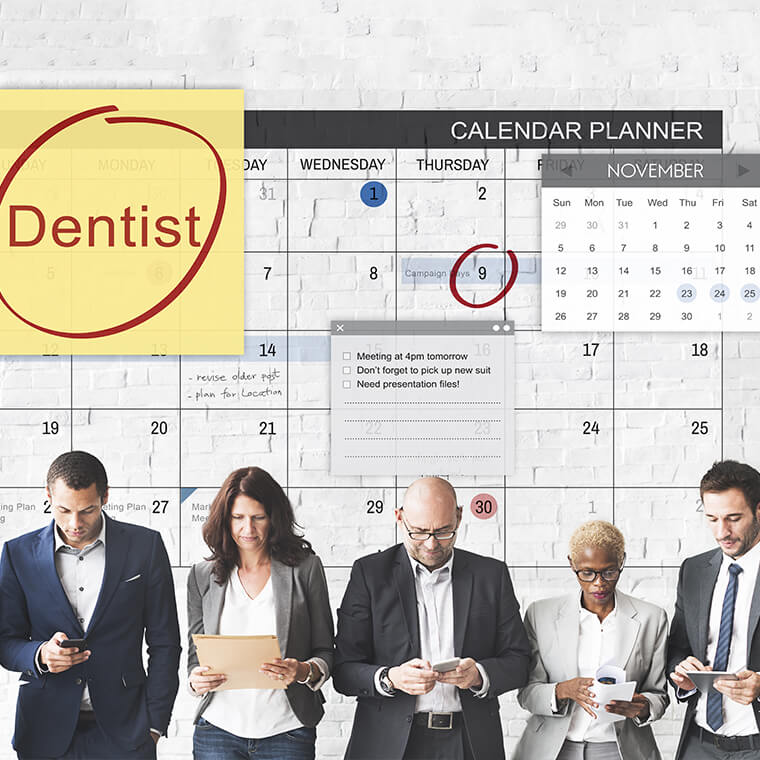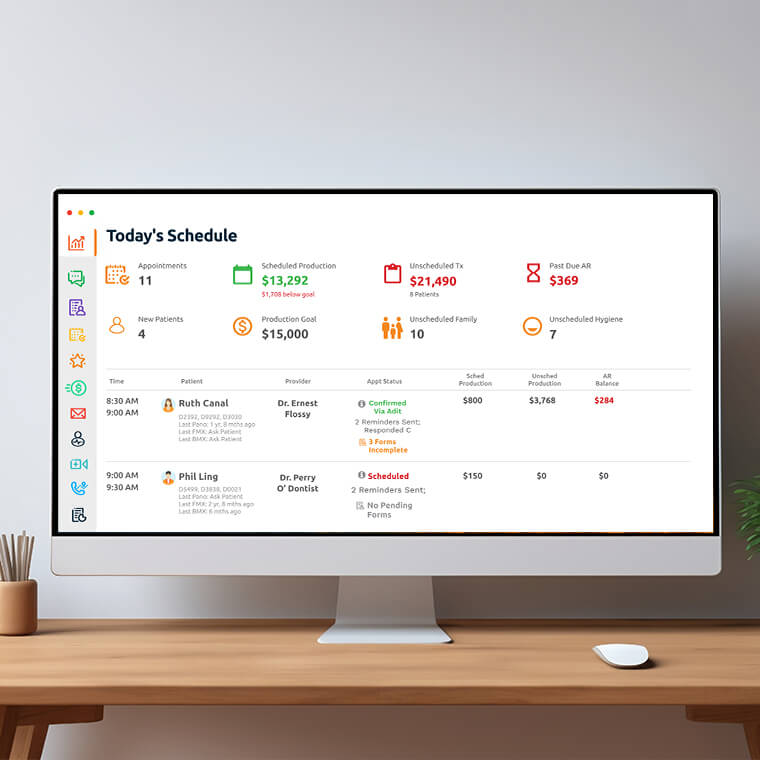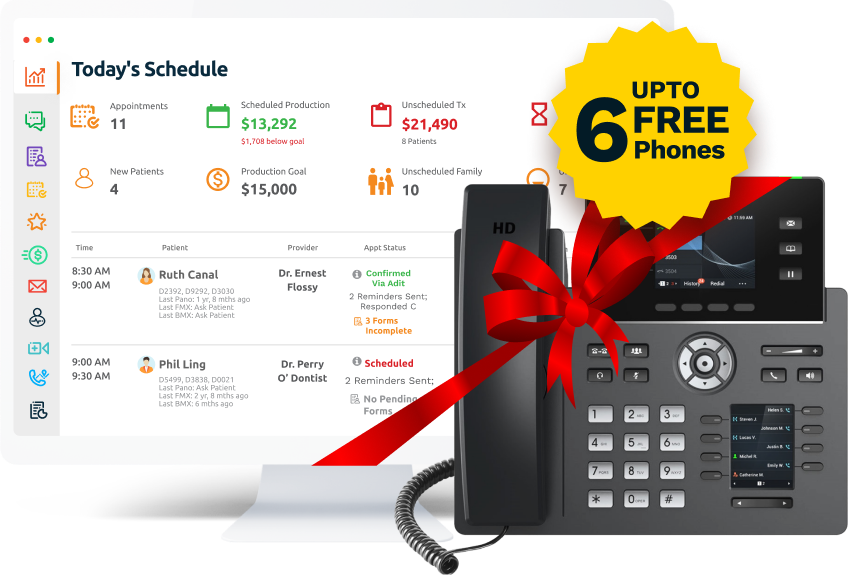Ends in
ends in 111 Days

ends in 111 Days

ends 11 July
Strategies for Managing Dental Patient Anxiety and Fear

Fear of going to the dentist is a common challenge that dental practices must help patients overcome. For many, the thought of sitting in the dentist’s chair is anxiety-inducing, leading to missed appointments and neglected oral health. Dental anxiety can stem from a variety of sources, including previous bad experiences, fear of pain, or embarrassment about dental hygiene.
However, dentists can unintentionally exacerbate these fears if they do not create a seamless oral healthcare experience from start to finish. An efficient, patient-centric approach is essential in ensuring that patients feel comfortable and cared for throughout their visit. This article explores the strategies dental practices can implement to manage and alleviate patient anxiety and fear.
Why Your Inefficient Practice Management Processes Increase Patient Discomfort

Understanding how inefficiencies from outdated dental software can contribute to patient anxiety is the first step toward creating a more patient-friendly environment. Below are several common issues that can exacerbate this discomfort:
1. Long Wait Times
Patients often arrive at dental appointments already feeling anxious. When they are left waiting for extended periods, their anxiety can escalate. Long wait times can result from poor scheduling practices, overbooking, or delays in previous appointments. Reducing wait times through efficient scheduling and using digital patient forms instead of paper is crucial to maintaining a calm and welcoming atmosphere.
2. Poor Communication
Communication is a cornerstone of effective dental care. When communication is lacking or unclear, patients can feel uncertain and anxious. This includes failing to provide clear explanations of procedures, not informing patients about expected wait times, or neglecting to address patient concerns and questions thoroughly. Interactions should be proactive and empathetic, ensuring that patients are well-informed and feel heard throughout their visit.
3. Disorganized Records

Effective record-keeping is critical to providing seamless care. Disorganized or outdated records can lead to delays, errors, and miscommunications. For instance, a misplaced file can result in a patient being asked repetitive questions, or a dentist not having access to crucial medical history during a consultation. Ensuring that all records are up-to-date, easily accessible, and correctly organized can streamline the patient experience and minimize unnecessary stress.
4. Inconsistent Follow-Ups
Follow-up communication is another essential aspect of patient communication, yet many practices fail to maintain consistency in this area. Patients may leave an appointment with instructions or recommendations that they quickly forget. Inconsistent follow-ups can leave patients feeling abandoned and uncertain about their dental care plan. Regular and timely follow-ups, automated through phone calls, emails, or text messages, help reassure patients that their health is being monitored and that the practice is invested in their ongoing care.
5. Poor Treatment Plan Communication/Transparency
A lack of transparency in treatment planning can lead to confusion and anxiety for patients. When patients are not fully informed about their treatment options, costs, and expected outcomes, they may feel overwhelmed and uncertain about their dental care. Clear and transparent communication about treatment plans, including discussing alternatives, risks, and benefits, is essential in empowering patients to make informed decisions about their oral health.
6. Indifference of Staff
The demeanor of the dental office staff can significantly impact a patient's level of comfort. Indifferent staff can make patients feel unwelcome and increase their anxiety. On the other hand, a warm, friendly, and empathetic approach can help patients feel more at ease. Training staff to be courteous, patient, and responsive to patient needs is essential in creating a supportive and comforting environment.
7. Complex Billing Processes

Billing can be a significant source of stress for patients, especially if the process is complex or unclear. Unexpected charges or complicated insurance processes can leave patients feeling frustrated and anxious. Transparent and straightforward billing practices are essential. Providing clear explanations of costs, what is covered by insurance, and available payment options can help alleviate financial anxiety and ensure patients are not caught off guard by unexpected expenses.
8. Lack of Modern Technology
Using outdated technology can make dental procedures seem more intimidating and less efficient, contributing to patient anxiety. Modern dental technology, such as digital imaging, laser dentistry, and CAD/CAM systems, can make procedures quicker, less invasive, and more comfortable. Additionally, demonstrating the use of advanced technology during consultations can help patients feel more confident in the care they are receiving.
Top 7 Ways to Combat Dental Anxiety and Fear

It's probably becoming clear that dental practice owners and managers need a well-rounded approach to tackle patient dental anxiety. From creating a relaxing in-office atmosphere to streamlining everyday processes to improve treatment experiences, there's a lot one can do to make dental visits less scary.
How Platinum Care Dental cut 25% manual front desk workload with Adit Lite Got big front desk needs but a small software budget? Adit Lite may be your solution! Platinum Care Dental replaced Opera DDS and World Pay with Adit Lite. With digital forms that auto-upload...
Schedule a DemoLet's dive into the top 7 ways your clinic can make this happen.
1. Create a Relaxing Environment
A welcoming and calming office environment can significantly reduce patient anxiety. Consider soothing decor, comfortable seating, and amenities such as calming music or aromatherapy. Natural elements like plants or water features can also contribute to a tranquil atmosphere.
Additionally, ensure that the waiting area is clean, organized, and free from clutter to promote a sense of serenity. Toss the clipboards full of paperwork and instead send patient forms electronically ahead of their visit.
2. Enhance Communication
Whether a patient is on the phone or in the treatment chair, dentists should always have enough time to explain procedures in detail, using layman's terms and visual aids to help patients understand what to expect. Encouraging patients to ask questions and voice their concerns fosters a sense of trust and transparency.
Additionally, consistently following up after a procedure or just sending a personalized patient email helps break down walls of anxiety and empowers patients to feel more in control of their oral health care.
3. Prioritize Efficient Scheduling

Streamlining scheduling processes is key to reducing patient anxiety and improving the overall experience. Online booking allows patients to schedule appointments at their convenience, without the need to wait on hold or navigate complex phone menus. Real-time availability ensures that patients can find appointments that fit their schedule, minimizing wait times and reducing stress. Automated appointment reminders via email or text message help patients stay organized and prepared for their visit, further enhancing the efficiency of the scheduling process.
4. Provide Distraction Techniques
Offering distraction techniques can help take patients' minds off the procedure and reduce anxiety. Providing TV screens with entertainment options, headphones with calming music, or virtual reality headsets with immersive experiences can help patients relax and stay occupied during their visit. Some practices also offer stress balls or fidget toys to keep patients' hands busy and distract them from any discomfort. These tools create a more pleasant and enjoyable experience for patients, making dental visits feel less daunting.
5. Train Empathetic Staff

Ensuring that all employees are trained in empathy and patient care is crucial in managing dental anxiety. From the front desk to the dental chair, every interaction should convey warmth, understanding, and compassion. Staff should actively listen to patients' concerns, validate their feelings, and offer reassurance throughout their visit.
Additionally, dental staff should be trained to recognize signs of anxiety and respond appropriately, whether it's offering a comforting hand on the shoulder or taking a few extra minutes to explain a procedure. Friendly, empathetic staff can make a significant difference in how patients perceive their dental experience.
6. Simplify Billing
Transparent and straightforward billing processes help alleviate financial anxiety for patients. Providing clear explanations of costs, insurance coverage, and payment options ensures that patients are not caught off guard by unexpected charges. Many patients experience anxiety about the cost of care and related insurance challenges, which are frequent barriers that prevent them from receiving crucial oral healthcare services.
Offering flexible payment plans or financing options can also ease financial strain for patients with limited budgets. By simplifying the billing process and addressing any financial concerns upfront, practices can reduce stress and make the overall experience more positive for patients.
7. Educate Patients
Providing educational materials about dental health and procedures empowers patients and reduces fear. Visual aids, such as diagrams or videos, can help patients understand the importance of oral hygiene practices and the rationale behind recommended treatments. Dedicated pages on your dental website provide an additional resource to answer important questions after office hours.
Taking the time to explain each step of the treatment process, including potential risks and benefits, keeps patients informed and involved in their care. Knowledgeable patients are more likely to feel in control of their oral health and less anxious about visiting the dentist.
Create Stellar Dental Care Experiences with Adit

Dental anxiety encompasses the entire patient experience, from scheduling appointments to post-visit follow-ups. Overcoming these fears involves more than reassurances—it's about creating an environment where patients feel comfortable and cared for.
To achieve this, dental practices need comprehensive solutions like Adit Dental Software. Adit offers a range of features designed to streamline operations and enhance the patient experience:
- Online Scheduling: Seamlessly syncs with your internal calendar, reducing wait times and making it easy for patients to book appointments.
- Adit Pay: Simplifies billing and payment collection, ensuring transparency and reducing financial anxiety for patients.
- Telemed: Allows for virtual consultations, offering convenience and reducing the need for in-person visits, particularly beneficial for anxious patients.
- Automated Reminders: Keep patients informed and engaged with their dental care through customizable reminders and follow-ups.
- Professional Website Design: Provides a user-friendly experience and clear guidance for patients navigating your online presence.
- Treatment Planning: Helps patients understand their care and feel more in control of their oral health journey by creating an intuitive treatment plan personalized to their needs.
- Practice Analytics: Enhance communication and operational efficiency within your practice by getting to the root of inefficient aspects of your dental office with real-time data analytics.
- Internal Chat: Facilitate smooth internal communication and team coordination that minimizes interruption during patient visits.
With Adit's innovative practice management tools, dental practices can create a more efficient, patient-centric environment that reduces anxiety and fosters trust. To explore how our dental software can streamline your practice operations to alleviate patient anxiety, schedule a free demo today.
more about Adit?
Access a full suite of patient communication tools with Adit! Texting, payments, reviews, & scheduling in one place.
Schedule a DemoAngela is a former English teacher turned marketing content specialist. Over the past 10 years, she’s developed marketing strategies to forge enduring bonds between B2B, B2C and SaaS companies and their clients through holistic education, effective communication, and captivating storytelling that moves audiences to act.
Get a $25 Gift Card when you take a demo
Schedule a Demo
Get a $50 Gift Card
when you take a demo
Looks like you're out of bounds!
Hey there! Your current location falls outside Adit's area of operation. If this is unexpected, try disabling your VPN and refresh your page. For further assistance or to book a live demo, connect with us at 832-225-8865.
December 22 Amazon Demo Promo
Terms and Conditions
Last Updated: December 22, 2025Offer ends December 25, 2025, and is limited to prospective customers who sign an annual agreement before December 31, 2025. Gift card will be emailed to the company owner or established representative within 4 weeks of signing the annual agreement. Offer may not be combined with any other offers and is limited to one (1) gift card per office. Offer is not available to current customers or to prospective customers or individuals that have participated in a Adit demo during the prior six (6) months. Recipient is responsible for all taxes and fees associated with receipt and/or use of the gift card as well as reporting the receipt of the gift card as required under applicable federal and state laws. Adit is not responsible for and will not replace the gift card if it is lost or damaged, is not used within any applicable timeframe, or is misused by the recipient. Adit is not responsible for any injury or damage to persons or property which may be caused, directly or indirectly, in whole or in part, from the recipient’s participation in the promotion or receipt or use of the gift card. Recipient agrees to indemnify, defend and hold harmless Adit from and against any and all claims, expenses, and liabilities (including reasonable attorney’s fees) arising out of or relating to a recipient’s participation in the promotion and/or recipient’s acceptance, use or misuse of the gift card. This offer is sponsored by Adit Communications, Inc. and is in no way sponsored, endorsed or administered by, or associated with Amazon.
Thank You!
We appreciate your interest! Adit AI will be calling you in the next few minutes!
Why Adit?
Cut your software bill by up to 60% when you merge everything your dental office needs to run under one roof.
Centralize Communications
- Phones & TeleMed
- Emails & eFax
- Texting & Reminders
- Call Tracking and more!
Streamline Operations
- Patient Forms
- Online Scheduling
- Payments
- Reviews and more!
Boost Production
- Performance Dashboards
- Morning Huddle
- Claims & Collections
- Patient Profiles
- Follow Up Lists
- Year Over Year Metrics
Acquire More Patients
- Digital Marketing
- Website Design
- SEO
- Google Ads
- Facebook Ads
Ends in

Sign up by filling out the form







